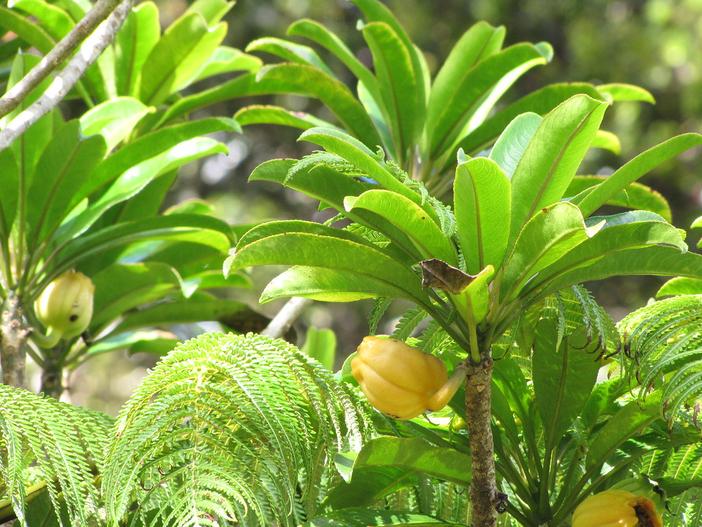`Oha Wai Nui
(Clermontia arborescens)
`Oha Wai Nui (Clermontia arborescens)
/
/

Forest and Kim Starr
CC BY 2.0
Image By:
Forest and Kim Starr
Recorded By:
Copyright:
CC BY 2.0
Copyright Notice:
Photo by: Forest and Kim Starr | License Type: CC BY 2.0 | License URL: https://creativecommons.org/licenses/by/2.0/ | Uploader: Starr Environmental | Publisher: Flickr

























Estimated Native Range
Summary
Clermontia arborescens, commonly known as `Oha Wai Nui, Hawaii Tree Lobelia, or Koli’i, is a perennial shrub or small tree endemic to the Hawaiian Islands. It thrives in wet montane forests, typically on ridges or steep slopes, and is an important component of the native cloud forest ecology. This species grows slowly to a height of 10-30 feet (3-9 meters) and a width of 5-10 feet (1.5-3 meters). Clermontia arborescens has an upright form with large, leathery leaves and bears unique, curved, tubular green or yellow flowers that are quite showy, blooming in the spring and summer. The flowers are adapted for pollination by native Hawaiian honeycreepers, which are attracted to the nectar.
In cultivation, `Oha Wai Nui is valued for its unusual flowers and its role in native plant gardens. It is suitable for use in moist, shaded garden areas, and can be a focal point in a tropical plant collection. Gardeners should provide it with part shade and plant it in medium or slow draining loam soils, ensuring consistent high moisture levels. While it is not drought-tolerant, it does not require much maintenance if its water and soil needs are met. There are no major disease issues, but it can be susceptible to root rot if overwatered or planted in poorly draining soils. It is not known to be invasive outside its native range, but as with all native plants, care should be taken to prevent its spread into natural areas where it is not originally found.CC BY-SA 4.0
In cultivation, `Oha Wai Nui is valued for its unusual flowers and its role in native plant gardens. It is suitable for use in moist, shaded garden areas, and can be a focal point in a tropical plant collection. Gardeners should provide it with part shade and plant it in medium or slow draining loam soils, ensuring consistent high moisture levels. While it is not drought-tolerant, it does not require much maintenance if its water and soil needs are met. There are no major disease issues, but it can be susceptible to root rot if overwatered or planted in poorly draining soils. It is not known to be invasive outside its native range, but as with all native plants, care should be taken to prevent its spread into natural areas where it is not originally found.CC BY-SA 4.0
Plant Description
- Plant Type: Shrub, Tree
- Height: 10-30 feet
- Width: 5-10 feet
- Growth Rate: Slow
- Flower Color: Green, Pink, White
- Flowering Season: Summer
- Leaf Retention: Evergreen
Growth Requirements
- Sun: Part Shade
- Water: High
- Drainage: Medium, Slow
Common Uses
Bird Garden, Potted Plant
Natural Habitat
Endemic to wet montane forests on the Hawaiian Islands
Other Names
Common Names: Hawaii Tree Lobelia, Koli’i
Scientific Names: , Clermontia arborescens, Clermontia mannii, Cyanea arborescens,
GBIF Accepted Name: